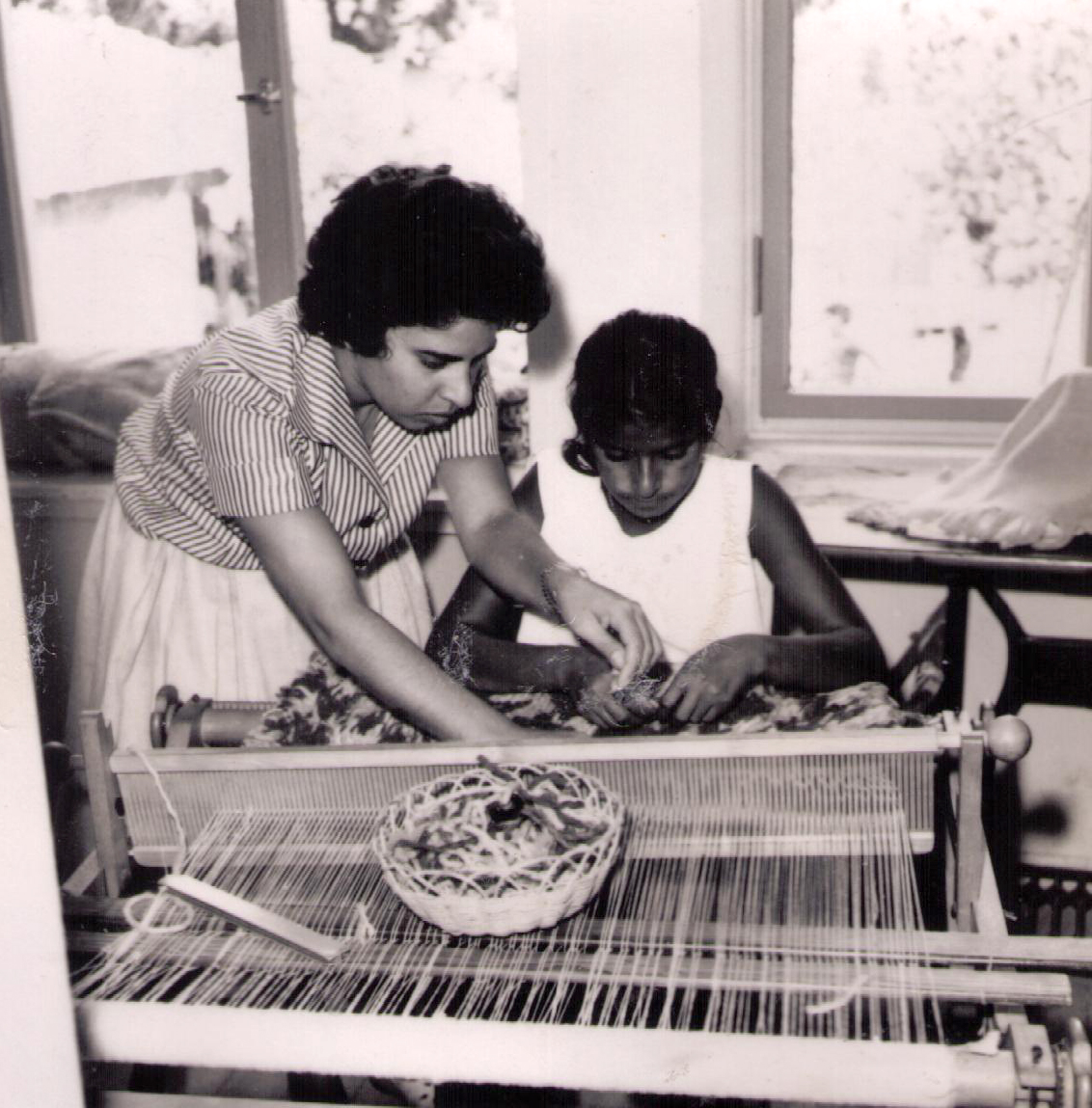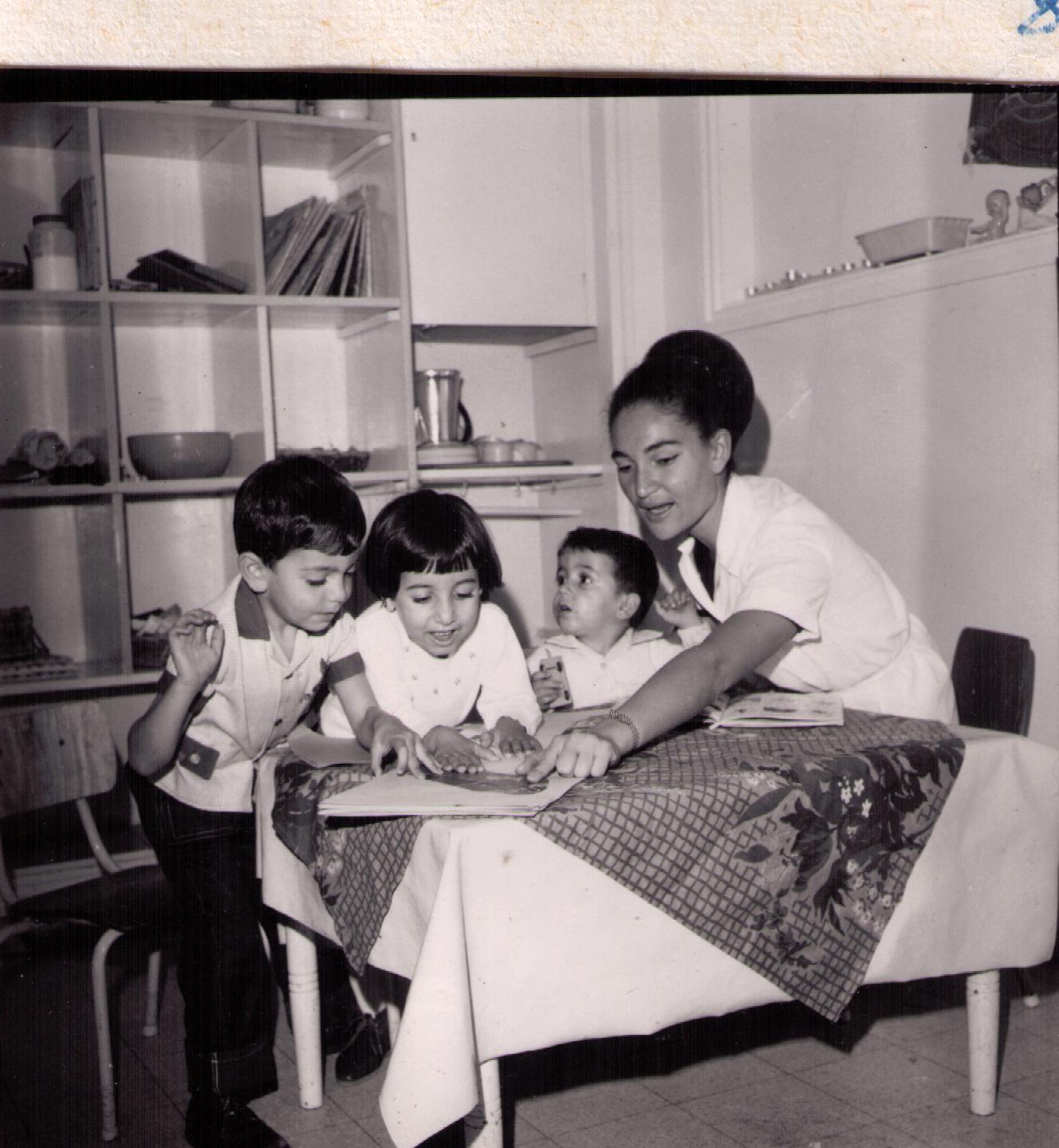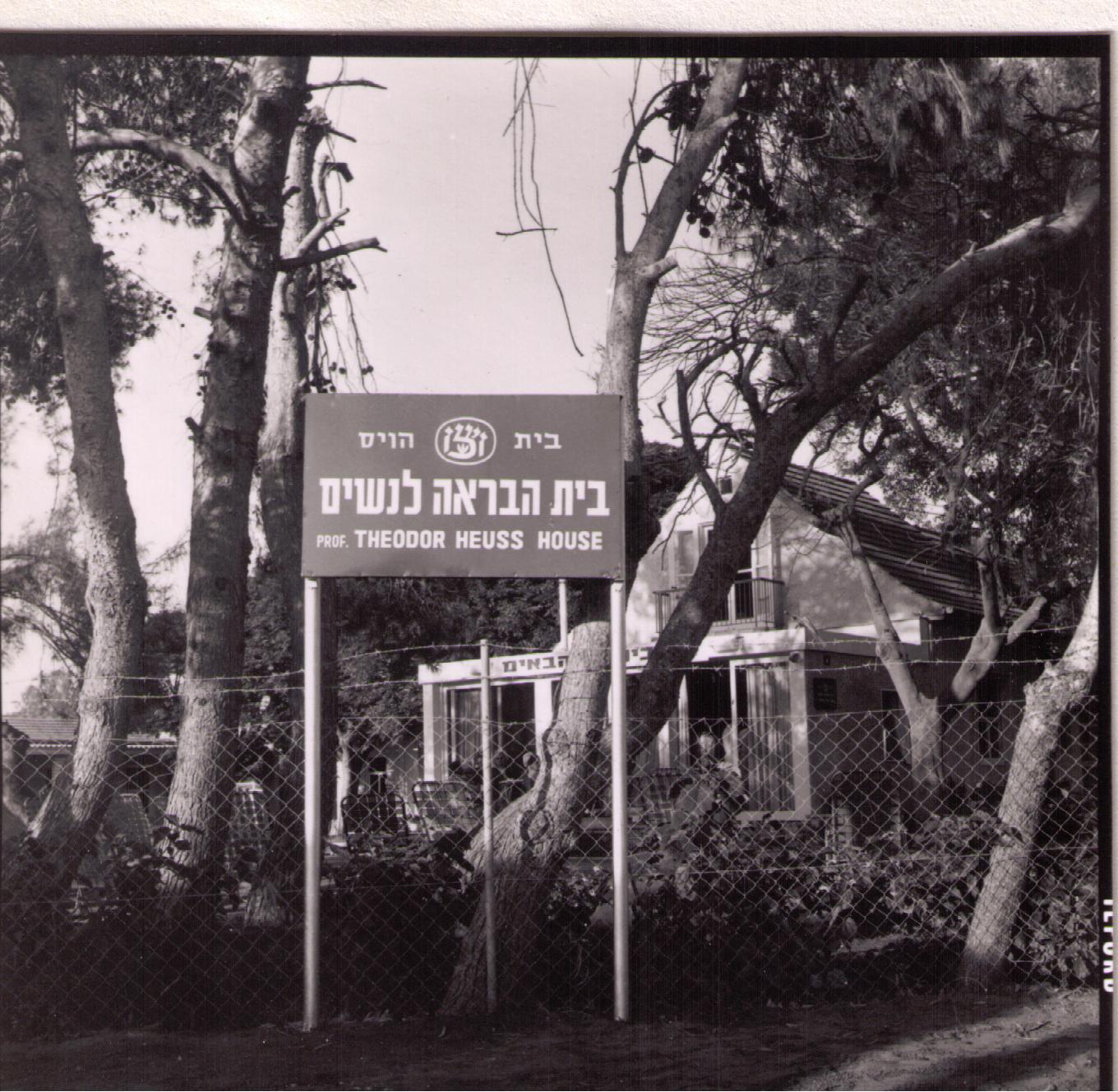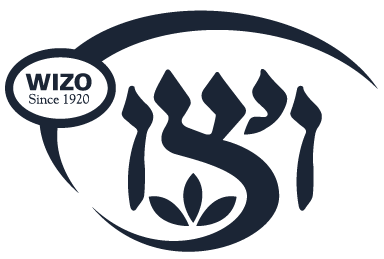
Home Industry and Shops
Three Home Industry shops are established in Jerusalem, Tel Aviv and Haifa and are used to channel the craft departments of the WIZO Schools into the general market. Since the Six Day War, the shops served as a source of employment for Arab women in East Jerusalem, Gaza and Bethlehem, where the women embroidered tablecloths and dresses. Prior to this, work had been supplied to the Druze women in Pe’kiin. The Department of Home Industry employed women to provide items for practical daily use, such as housecoats, raffia products and plastic lattice work.
(In the photo to the right: WIZO store, 1965)
The work was done by women who could not leave their homes, for reasons of age or health, or they had many children, and who needed money for their basic survival. The women who could leave the home worked in workshops set up by the Department of Home Industry.
These workshops provided hundreds of women with vocational guidance and a place of work, tools for their work, raw materials, and paid employment to provide a living for their families. The role of the Department was to train these women to work at home, and help with the family budget. Other women were given managerial roles to train women, obtain orders and market the products to factories or to private purchasers.
(In the photo: WIZO School Named after Maya Rosenberg Rehovot, 1960. Photo: Comeriner)


WIZO Milestones
1960 – WIZO is recognized as an NGO member of UNICEF.
The first issue of “Bamat Haisha” (Women’s Forum), the Hebrew periodical of WIZO Israel appears, edited by Shulamit Aloni. It features a report on a mock trial organized by WIZO, accusing Israeli women of being apathetic towards public and political life in the country.
The WIZO Federation in Germany is reestablished after years of inactivity. Hellen Israel becomes the President of WIZO Germany.
1962 – A decision is made to give priority to assisting social absorption of new immigrants. The first WIZO club for Arab women opened in Nazareth.
1963 – With Rebecca Sieff too ill to continue, Rosa Ginossar, the first female lawyer in Eretz Israel, is elected 2nd President of World WIZO.
1964 – The cornerstone is laid in Tel Aviv for the World WIZO Center, to be named Rebecca Sieff House, in the presence of Rebecca Sieff.
(In the photo: 1964-Cornerstone laying ceremony for Rebecca Sieff House, photo by Comeriner.)
A WIZO delegation led by WIZO Executive Chairperson Raya Jaglom is the first Zionist organization to pay an official visit to the Soviet Union, as guests of the Soviet Women’s Committee.
WIZO is invited to join the World Jewish Congress as an associate member, during its annual meeting in Jerusalem.
The first annual Bible Day is initiated by Fay Grove-Pollack.
1965 – At the 26th World Zionist Congress, WIZO is granted, for the first time, 12 members with voting rights and a seat on the Executive with full voting rights, to which it nominates Raya Jaglom.
The first annual Aviv Seminar for younger members of the European Federations is held in Paris.
At the 26th World Zionist Congress, WIZO is granted, for the first time, 12 members with voting rights and a seat on the Executive with full voting rights.


1966 – The Rebecca Sieff WIZO Center in Tel Aviv opens in the presence of the Sieff family.
David Ben-Gurion attends WIZO’s 3rd annual Bible Day.
15th World WIZO Conference recommends that all WIZO branches run candidates in local municipal elections.
(In the photo: WIZO Mothercraft Training Center, Tel Aviv, 1960’s. Photo: Comeriner)
1967 – Six Day War: WIZO reorganizes to assist the war effort. WIZO centers turned into local civilian headquarters for assistance to the front.
In response to Jerusalem mayor Teddy Kollek’s request to strengthen reunited Jerusalem, WIZO builds new day care centers in the city, initiated by Raya Jaglom.
WIZO Israel opens the Care of Families of War Casualties Department.
Theodore Heuss Rest Home for Mothers of Large Families opens in Herzliya Pituach, at the initiative of Raya Jaglom. It is named in honor of West Germany’s first president and sponsored by WIZO Germany.
(In the photo: opening of Beit Heuss May 1967. Photo: Comeriner)
1968 – At the 27th World Zionist Congress, WIZO has 18 members with voting rights and 18 alternates.
First annual bar mitzvah celebration for immigrant boys is organized by Immigrant Absorption Department.
1969 – WIZO begins to work actively on behalf of Soviet Jewry.
Cornerstone laid for WIZO France Municipal High School in Tel Aviv.


